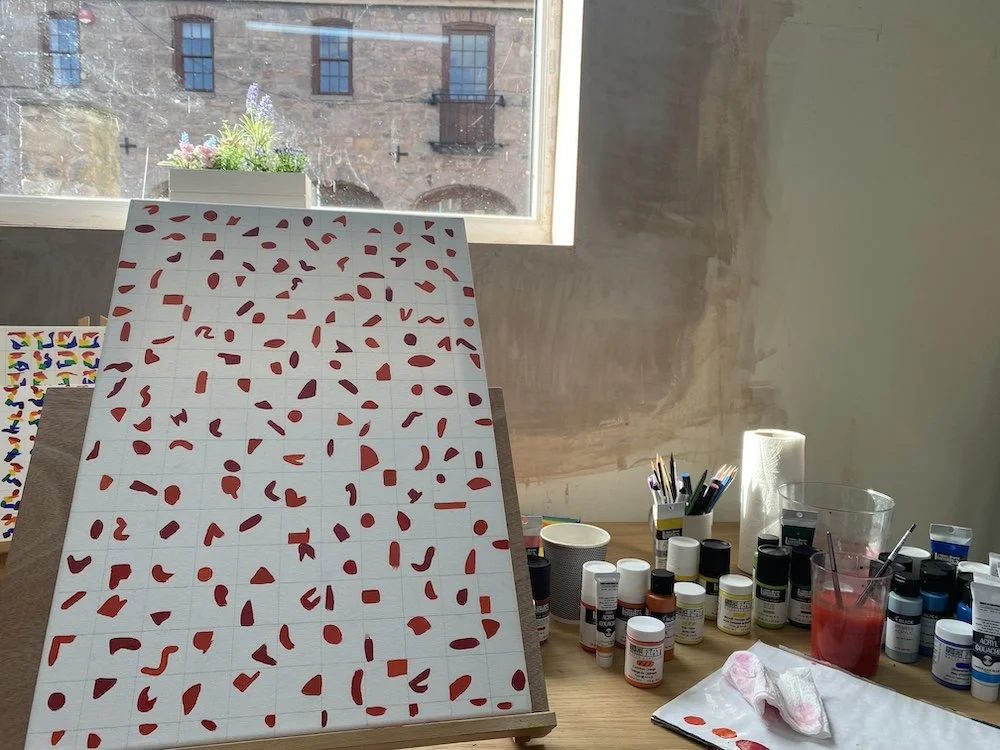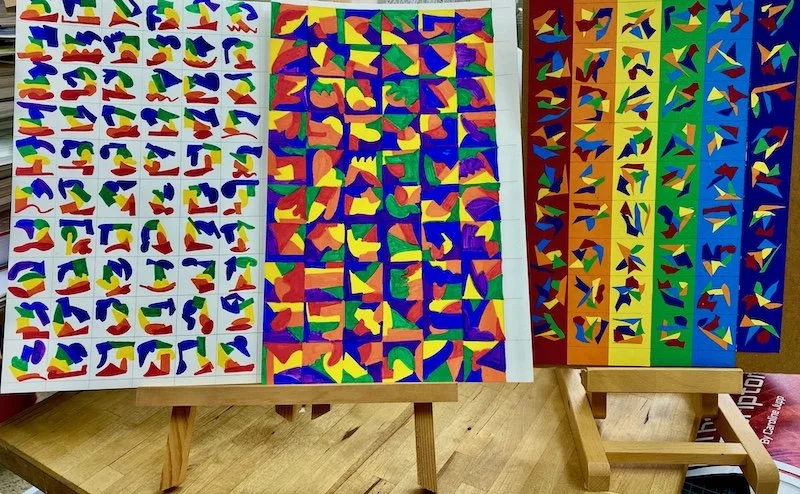Work In Progress: Illegal Colours
Rather than creating individual articles or social media posts I’m documenting the process behind my Illegal Colours series here in one place. The most recent update will be at the top…
Tuesday, 9th September 2025
I’ve been painting a lot of abstract rainbows, I wanted to test the paint and how it would look on stretched canvas rather than canvas panels; it’s a subtle difference, but the stretched canvas is better.
So far my rainbows have all been connected; red into orange into yellow into green into blue and finally into purple. They’re almost becoming their own language, painted characters that no one can understand. Are they symbols without meaning? Just as I put my paintbrush down, I realised it was an extension of the work I was doing last year with pareidolia.
My brain comes back to the same themes, a thread connects everything, without my even realising it.
I wondered if they will still be recognisable as rainbows if they don’t follow the red, orange, yellow, green, blue, purple rule. If the colours are all there, but not in that order. Is that still a rainbow? What makes it a rainbow, when it isn’t in the sky; the colours or shape or the flow?
Tomorrow I’ll continue experimenting with the six colours, but not in the ‘correct’ order, which is more in the style of the original ‘watermelon’ piece. So far the red is in place.
I was too impatient to decorate my studio, I’ll get to it in time.
Saturday, 30th August 2025:
In 1980, Israel introduced a ban on ‘politically significant’ artworks that contained the colours black, green, red, and white, which just happened to be the colours of the Palestinian flag.
This act of censorship gave rise to the watermelon as a symbol of Palestine, since it is impossible to paint a watermelon without those four colours.
The absurdity of restricting an artist’s palette in this way became the starting point for my ongoing series Illegal Colours. The first work responded directly to the ban, but the idea of illegal colours has stayed with me, and I’ve continued exploring colour, not just for how it looks, but for what it represents.
Algeria was the first country in the Middle East to ban rainbow-coloured items, but that censorship has since spread around neighbouring countries. Like the watermelon, rainbows occupy a dual existence: a natural occurrence, yet also a powerful cultural emblem. Since the 1970s it has been central to LGBTQIA+ identity through the pride flag, but it’s also an elemental phenomenon — light refracted through water. The fact that rainbow imagery has been censored in several countries underlines the impossibility of controlling colour and raises questions about how meaning is assigned to visual forms.
Are they going to censor the sky?
Lately I’ve been experimenting with the colours of the rainbow using different mediums and materials.
One piece is developing into a large abstract painting that connects back to my earlier watermelon work. At the same time, I’ve been drawn to working with paper on wood, cutting and layering shapes.
There’s something in that process, the way colours, textures and forms overlap, that speaks to symbolism — how anything can be assigned meaning. But is that meaning always shared? If someone doesn’t recognise the reference, does the symbol still mean anything, or does it lose its power?


